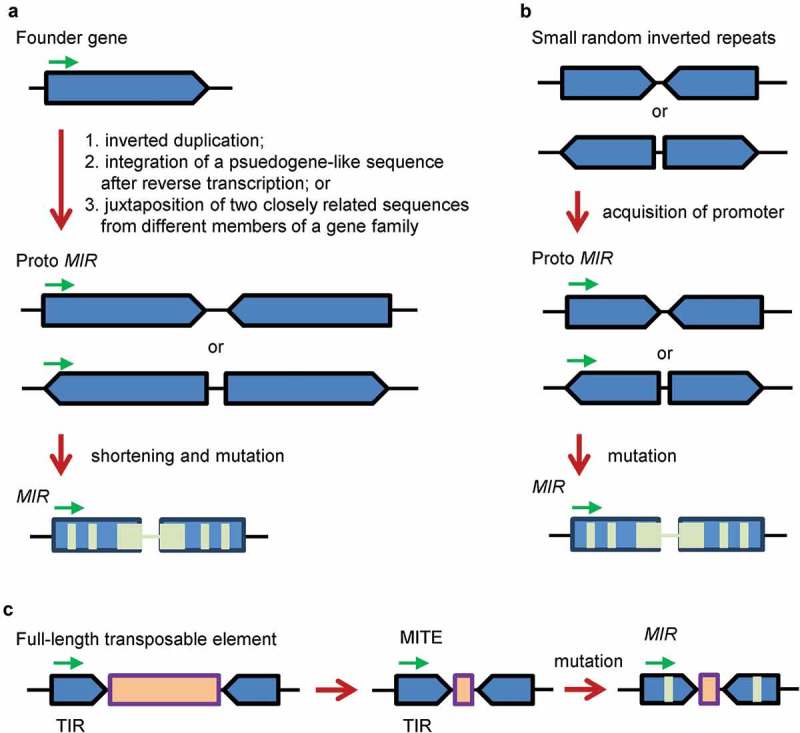Figure 1.

The inverted gene duplication, spontaneous evolution and transposon transposition models for de novo origination and evolution of plant MIRs. (A) The inverted gene duplication model [2]. Direct inverted duplication of a founder gene, integration of a pseudogene-like sequence after reverse transcription or juxtaposition of two closely related sequences from different members of a gene family resulted in the emergence of a proto MIR. Shortening and mutations (light green) of the proto MIR led to the generation of MIRs. (B) The spontaneous evolution model [6]. Small random inverted repeats scattered along plant genomes acquired a promoter, resulting in the emergence of a proto MIR. Mutations (light green) of the proto MIR led to the generation of MIRs. (C) The transposon transposition model [7]. A full-length transposable element with terminal inverted repeats (TIRs) and a long open reading frame (light brown) gave rise to a miniature inverted-repeat transposable element (MITE) with TIRs and a short open reading frame. Mutations (light green) of the MITE led to the generation of MIRs. Green arrows indicate transcription direction.
